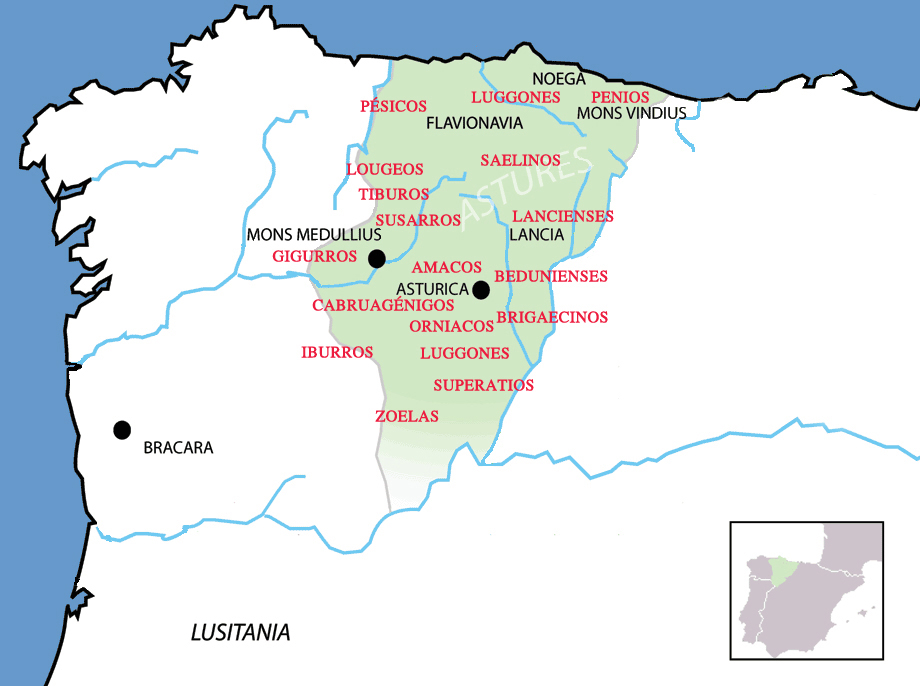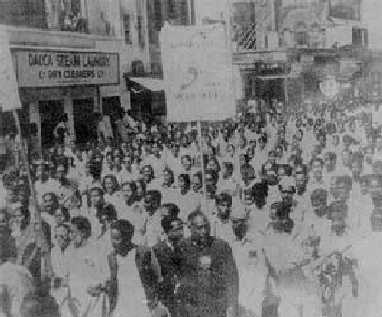|
Asociación De Profesores Y Monitores De Llingua Llïonesa
The ''Asociación de Profesores y Monitores en Llingua Llïonesa'' or APMLL (Leonese Language Teachers and Monitor Association) is a Leonese language association where are integrated the teachers and monitors that teach this language. It was founded in 2007 in Leon, Castile and Leon, Spain, and has members from the provinces of Llión, Zamora and Salamanca. Activities They have participated in several activities for promoting Leonese language, as Leonese language Day in 2008 or the Mother Language Day in 2009, where they signed a communicate with the Leonese language associations for promoting this language.http://www.conceyu.net/archivo/comunicau_dia_llingua_materna.pdf Leonese language associations communicate for the Mother Language Day See also * Leonese language Leonese ( ast-leo, Llionés, ast, Lleonés) is a set of vernacular Romance language varieties currently spoken in northern and western portions of the historical region of León in Spain (the modern prov ... [...More Info...] [...Related Items...] OR: [Wikipedia] [Google] [Baidu] |
Leonese Language
Leonese ( ast-leo, Llionés, ast, Lleonés) is a set of vernacular Romance language varieties currently spoken in northern and western portions of the historical region of León in Spain (the modern provinces of León, Zamora, and Salamanca) and a few adjoining areas in Portugal. In this narrow sense, Leonese is distinct from the dialects grouped under the Asturian language. There is no real linguistic division, though; it is only a purely political and identitary division, as dialectal areas (western, central, eastern...) are in fact shaped along a north-south axis (thus encompassing lands both north and south of the mountains, both in Asturias and in Castile and León). In the past, it was spoken in a wider area, including most of the historical region. The current number of Leonese speakers is estimated at 20,000 to 50,000. The westernmost fringes of the provinces of León and Zamora are in the territory of the Galician language, although there is dialectal continu ... [...More Info...] [...Related Items...] OR: [Wikipedia] [Google] [Baidu] |
León, Spain
León (; ) is a city and Municipalities of Spain, municipality of Spain, capital of the province of León, part of the autonomous community of Castile and León, in the northwest of the Iberian Peninsula. It has a population of 124,303 (2019), by far the largest municipality in the province. The population of the metropolitan area, including the neighbouring San Andrés del Rabanedo and other smaller municipalities, accounts for around 200,000 inhabitants. Founded as the military encampment of the ''Legio VI Victrix'' around 29 BC, its standing as an encampment city was consolidated with the definitive settlement of the ''Legio VII Gemina'' from 74 AD. Following its partial depopulation due to the Umayyad invasion of Hispania, Umayyad conquest of the peninsula, 910 saw the beginning of one its most prominent historical periods, when it became the capital of the Kingdom of León, which took active part in the Reconquista against the Moors, and came to be one of the fundamental ki ... [...More Info...] [...Related Items...] OR: [Wikipedia] [Google] [Baidu] |
Castile And Leon
Castile, Castille or Castilla may refer to: Places Spain *Castile (historical region), a vaguely defined historical region of Spain covering most of Castile and León, all of the Community of Madrid and most of Castilla–La Mancha *Kingdom of Castile, one of the medieval kingdoms of the Iberian peninsula, 1065–1230 *Crown of Castile, a medieval state in the Iberian Peninsula that formed in 1230 *Two regions of the Kingdom of Spain (until 1982): **Old Castile, in the north **New Castile (Spain), in the south *Two contemporary autonomous communities of Spain: **Castile and León, in the north **Castilla–La Mancha, in the south Elsewhere * Castile, New York *Castile (village), New York *Castilla District, Piura Province, Peru *Castilla de Oro, name given by Spanish in 16th century to Central American territories *Governorate of New Castile, modern Peru *Castilla, Sorsogon, municipality in Sorsogon, Philippines Other uses * Castile (surname) * Castilians, inhabitants of the hi ... [...More Info...] [...Related Items...] OR: [Wikipedia] [Google] [Baidu] |
Spain
, image_flag = Bandera de España.svg , image_coat = Escudo de España (mazonado).svg , national_motto = ''Plus ultra'' (Latin)(English: "Further Beyond") , national_anthem = (English: "Royal March") , image_map = , map_caption = , image_map2 = , capital = Madrid , coordinates = , largest_city = Madrid , languages_type = Official language , languages = Spanish language, Spanish , ethnic_groups = , ethnic_groups_year = , ethnic_groups_ref = , religion = , religion_ref = , religion_year = 2020 , demonym = , government_type = Unitary state, Unitary Parliamentary system, parliamentary constitutional monarchy , leader_title1 = Monarchy of Spain, Monarch , leader_name1 = Felipe VI , leader_title2 = Prime Minister of Spain ... [...More Info...] [...Related Items...] OR: [Wikipedia] [Google] [Baidu] |
Province Of Llión
A province is almost always an administrative division within a country or state. The term derives from the ancient Roman ''provincia'', which was the major territorial and administrative unit of the Roman Empire's territorial possessions outside Italy. The term ''province'' has since been adopted by many countries. In some countries with no actual provinces, "the provinces" is a metaphorical term meaning "outside the capital city". While some provinces were produced artificially by colonial powers, others were formed around local groups with their own ethnic identities. Many have their own powers independent of central or federal authority, especially in Canada and Pakistan. In other countries, like China or France, provinces are the creation of central government, with very little autonomy. Etymology The English word ''province'' is attested since about 1330 and derives from the 13th-century Old French , which itself comes from the Latin word , which referred to the sphere ... [...More Info...] [...Related Items...] OR: [Wikipedia] [Google] [Baidu] |
Province Of Zamora
Zamora () is a province of western Spain, in the western part of the autonomous community of Castile and León. It is bordered by the provinces of Ourense, León, Valladolid, and Salamanca, and by Portugal. The present-day province of Zamora was one of three provinces formed from the former Kingdom of León in 1833, when Spain was reorganized into 49 provinces. Of the 174,549 people (2018) in the province, nearly a third live in the capital, Zamora. This province has 250 municipalities. Geography The Province of Zamora is in northwestern Spain where it borders on Portugal, which lies to the southwest. To the west lies the province of Ourense, to the north lies León, to the east lies Valladolid, and to the south lies Salamanca. The River Esla rises in the Cantabrian Mountains in the north and flows southwards through the province before joining the River Douro (Spanish: el Duero) which then forms part of the boundary with Portugal. The Esla is the largest tributary o ... [...More Info...] [...Related Items...] OR: [Wikipedia] [Google] [Baidu] |
Province Of Salamanca
Salamanca () is a province of western Spain, in the western part of the autonomous community of Castile and León (Castilla y León). It is bordered by the provinces of Zamora, Valladolid, Ávila, and Cáceres, and on the west by Portugal. It has an area of 12,349 km² and in 2018 had a population of 331,473 people. It is divided into 362 municipalities, 11 comarcas, 32 mancomunidades and five judicial districts. Of the 362 municipalities, more than half are villages with fewer than 300 people. History The Vettones occupied the areas of the current Spanish provinces of Salamanca and Ávila, as well as parts of Cáceres, Toledo and Zamora. They were a pre-Roman people of Celtic culture. Their numerous archaeological sites exist throughout the province, and several locality names have Vettone origin, some of which are quite important. This is the case of Salamanca (''Salmantica''), Ledesma (''Bletisama'') and Ciudad Rodrigo (''Augustobriga''). Vettone villages were often esta ... [...More Info...] [...Related Items...] OR: [Wikipedia] [Google] [Baidu] |
Mother Language Day
International Mother Language Day is a worldwide annual observance held on 21 February to promote awareness of linguistic and cultural diversity and to promote multilingualism. First announced by UNESCO on 17 November 1999, it was formally recognized by the United Nations General Assembly with the adoption of UN resolution 56/262 in 2002. Mother Language Day is part of a broader initiative "to promote the preservation and protection of all languages used by peoples of the world" as adopted by the UN General Assembly on 16 May 2007 in UN resolution 61/266, which also established 2008 as the International Year of Languages. The idea to celebrate International Mother Language Day was the initiative of Bangladesh. In Bangladesh, 21 February is the anniversary of the day when the people of Bangladesh (then East Pakistan) fought for recognition for the Bangla language. It is also celebrated in West Bengal, India. History 21 February was declared to be the International Mother L ... [...More Info...] [...Related Items...] OR: [Wikipedia] [Google] [Baidu] |
Leonese Language Writers
This is a list of writers who have worked in the Leonese language (Llingua Llïonesa in Leonese), a language developed from Vulgar Latin with contributions from the pre-Roman languages which were spoken in the territory of the Spanish provinces of León, Zamora, and Salamanca and in some villages in the District of Bragança, Portugal. The Leonese language belongs to the Leonese or Astur-Leonese subgroup of Iberian languages. * Caitano Bardón (1881–1924) * Eva González (1918–2007) * Severiano Álvarez (born 1933) See also * Leonese language * Cuentos del Sil ''Cuentos del Sil'' (''Tales of the Sil'') is a Leonese language book written by nine Leonese language writers. It was sponsored by the provincial government of León, and two Leonese language associations: El Fueyu and El Toralín. The autho ... External links Cuentos del Sil website (in Leonese language)Leonese Language Association from El Bierzo (in Leonese language)Leonese Language Association "El Fu ... [...More Info...] [...Related Items...] OR: [Wikipedia] [Google] [Baidu] |




